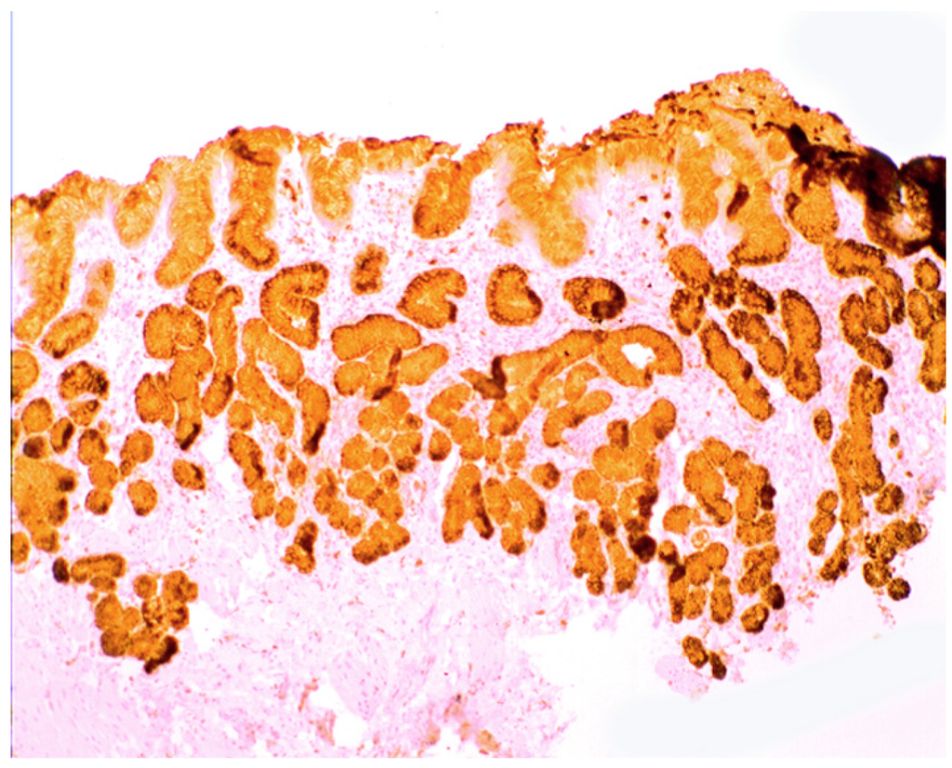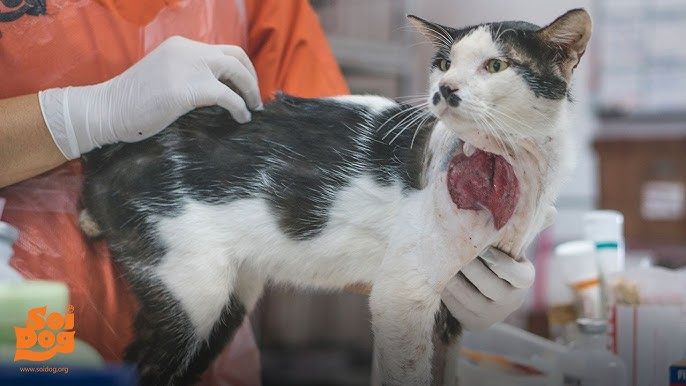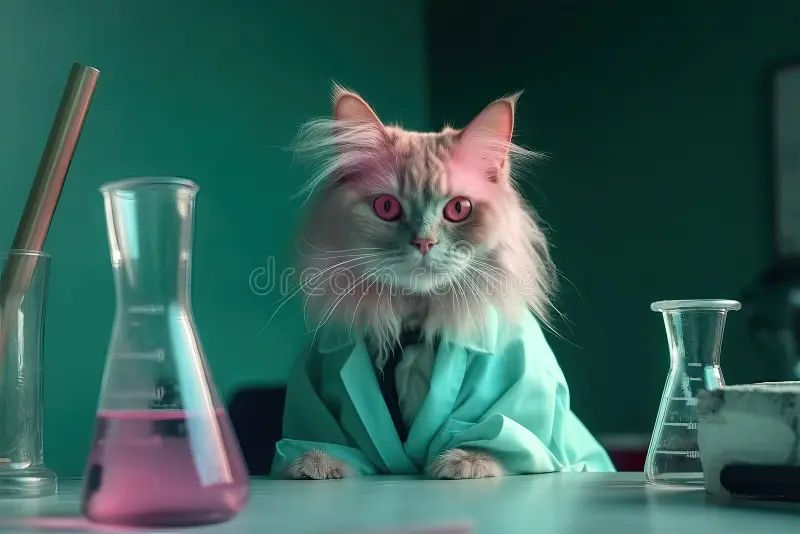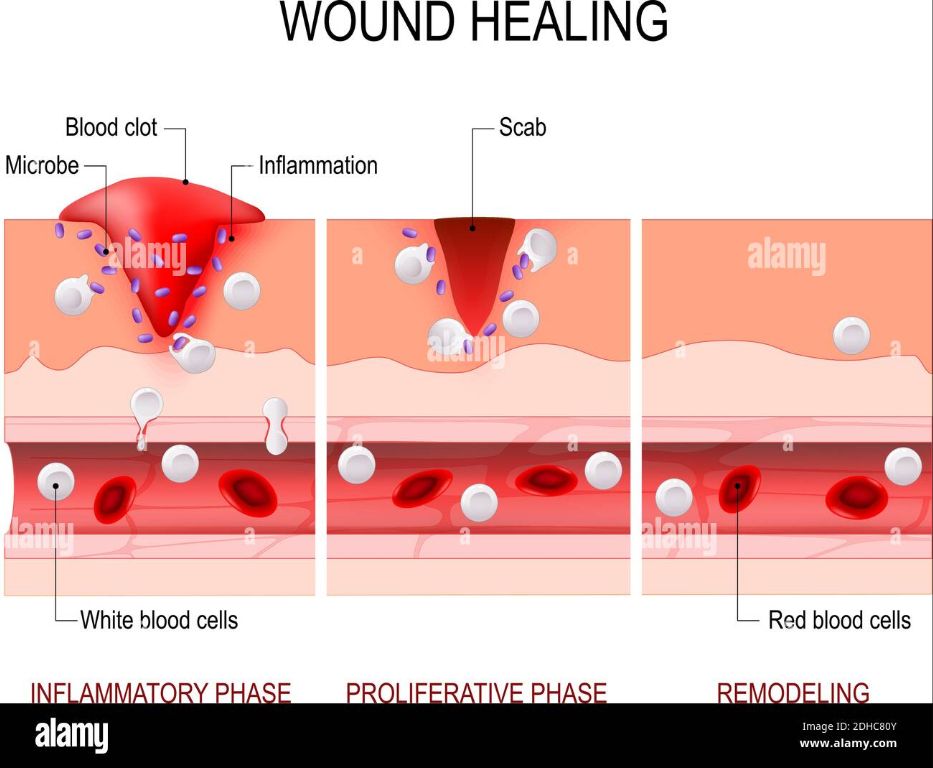There is an ancient belief that cat saliva has healing properties and can help wounds heal faster. This belief has roots going back to ancient Egypt, where cats were revered as sacred animals and their saliva was thought to have curative abilities. In some cultures, the practice of licking wounds to promote healing is also seen in both humans and animals. The idea that saliva, whether from humans or animals, can aid wound healing persists today in some folk remedies.
Proponents of using cat saliva on wounds claim it contains enzymes and compounds like lysozyme that can fight bacteria. They argue that the practice of licking wounds mimics treatments like maggot therapy for cleaning wounds. However, there are also risks associated with using any animal saliva on open wounds, such as infection. Overall, the ability of cat saliva to effectively and safely heal wounds in humans remains scientifically unproven.
Components of Cat Saliva
Cat saliva contains a variety of enzymes, antibodies, and growth factors that serve different purposes.

Some key components include:
- Enzymes like lysozyme to help break down food and attack bacteria.
- Antibodies like immunoglobulins to provide immune system protection.
- Growth factors like nerve growth factor (NGF) which promotes healing.
In particular, NGF levels in cat saliva are especially high compared to other animals. Some research indicates NGF facilitates wound healing. However, more studies are still needed on the mechanisms and effects.
Overall, the chemical makeup of cat saliva is complex. While it can help cats digest food and defend against germs, the components interact uniquely with human bodies in both positive and negative ways.
Potential Healing Properties
Cat saliva contains substances that may have antibacterial and wound cleaning effects. Specifically, cat saliva contains lysozyme, an enzyme that can break down bacterial cell walls and act as a disinfectant https://www.youtube.com/watch?v=k9SNFsYC2Vw. When cats lick their wounds, the lysozyme in their saliva helps kill microbes that could cause infection and cleans the area.

In addition to lysozyme, cat saliva contains thromboplastin which promotes blood clotting and cytophil which protects against viruses . These substances may aid wound healing by stopping bleeding, preventing infection, and cleaning the area when a cat licks a wound.
However, while cat saliva has antibacterial properties, its ability to heal wounds is limited. The main benefit is likely wound cleaning rather than completely healing or closing injuries. More research is still needed on the exact healing capacities of cat saliva.
Risks and Dangers
Allowing a cat to lick open wounds on humans does carry some risks and dangers that should be carefully considered. The main concerns are bacterial infections and rabies.
A cat’s saliva contains bacteria that can cause infection in wounds. Bacteria such as Pasteurella, Staphylococcus, Streptococcus, and others are commonly found in cats’ mouths. These bacteria can be transferred into an open wound when a cat licks it, potentially leading to infection, abscess, and in severe cases even sepsis or septic shock [1].

Another well-known risk from cat saliva is rabies. Rabies is transmitted through saliva, so a bite or scratch from a rabid cat could transfer the virus. Rabies attacks the central nervous system and causes brain inflammation, leading to death if left untreated. Thankfully, rabies is not very common in domestic cats in areas with good veterinary care and vaccination programs [2].
In addition to infections, cat scratches and bites can cause cat scratch disease, a bacterial infection transmitted in cat saliva. Cat scratch disease causes swollen lymph nodes and fever [2].
Overall, it’s best to avoid letting cats lick open wounds, as their saliva can introduce harmful bacteria. Seek prompt medical attention for any infection resulting from a cat lick.
Documented Cases
There are several anecdotal reports of cat saliva helping heal wounds. For example, according to https://www.quora.com/Does-cat-saliva-contain-an-antiseptic-that-helps-heal-wounds, many cat owners over the years have observed that wounds or scratches licked by a cat seem to heal faster than expected. There are stories of serious cuts healing rapidly after a cat licks them repeatedly. While anecdotal, these reports suggest that some compound in cat saliva may have healing properties.
One case documented in https://www.vetstreet.com/our-pet-experts/why-does-my-cat-lick-her-wounds involves a cat named Sadie who licked a large abscess on her rear leg daily until it healed completely. The owner expressed amazement at how quickly Sadie’s wound closed up after her diligent licking. Though not scientific evidence, this lends credence to the idea that cat saliva assisted the healing process.
There are also accounts on forums and internet discussions of cat owners who allow and even encourage their cats to lick cuts, scrapes, and surgical incisions, claiming the wounds heal noticeably faster as a result. While anecdotal, the persistence of these accounts points to a need for more rigorous scientific study on the potential wound healing effects of cat saliva.
Scientific Research
Several scientific studies have examined the potential wound healing properties of cat saliva. A study published in the Journal of Feline Medicine and Surgery found that cat saliva contains compounds like lysozyme and peroxidase that have antibacterial effects against certain bacteria responsible for wound infections. The study showed cat saliva killing the bacteria Pasteurella multocida and Escherichia coli in Petri dish experiments.

Another study identified a protein called Nerve Growth Factor in dog and cat saliva that stimulates cell regeneration and accelerates wound healing. Researchers found it reduced the time for corneal abrasion healing in dogs by 50%.
While these studies show potential healing properties, experts caution that cat saliva can also contain harmful bacteria that lead to infection. More research is still needed to determine the overall risks and benefits of using cat saliva on human wounds.
Expert Opinions
Veterinarian Dr. Marty Becker states, “Cat saliva does contain substances that promote healing. For example, it contains lysozyme, an enzyme with antibacterial properties that helps keep wounds clean. It also contains bradykinin, a protein that reduces blood pressure and improves circulation, as well as histatins, proteins with wound-healing and antibacterial abilities.” (PetMD)
According to veterinary surgeon Dr. Karen Becker, “It is true that cat, dog and other mammalian saliva contains lysozyme, an enzyme that kills bacteria. So when kitty licks a minor wound, she is helping to sterilize it. However, be aware that the oral flora in cats and dogs fights wound infections in these animals, not necessarily in human wounds.” (CatBandit.com)
Veterinarian Dr. Justine Lee comments, “I would not recommend letting your pet cat (or any pet) lick your own wounds. We do not know the true ‘sterile’ nature of their saliva.” (Quora)
Self-Healing Process
The body has an innate ability to heal wounds through a complex physiological process. When skin is damaged, the wound healing process immediately kicks into gear. According to a snippet from LifeExtension, “That’s how wounds heal naturally, forming tissue that “belongs” in each specific part of the body. So it makes sense to turn to activated platelets to help wounds heal normally.” The stages of natural wound healing involve inflammation, new tissue formation, and tissue remodeling. Inflammation starts right after the injury, as the immune system sends platelets and leukocytes to the wound to stop bleeding and prevent infection. Next, fibroblasts form collagen to mend the damaged tissue. Angiogenesis occurs to rebuild blood vessels around the wound. The final remodeling stage can take months or years as collagen cross-links for enhanced strength. The body is equipped to heal many basic wounds on its own through this physiological process.

When to Seek Medical Care
While many minor wounds can heal on their own, it’s important to monitor cuts or scrapes for signs of infection that may require medical treatment. Signs of infection include increasing pain, swelling, redness, warmth around the wound, red streaks extending from the wound, pus or fluid drainage, and fever.
The National Health Service recommends seeking medical care if a wound shows no signs of healing after 2 weeks or if you observe any symptoms of infection like increased pain, swelling, pus, or fever [1]. Diabetics and those with compromised immune systems should seek care for any non-healing wound after 48 hours according to the American Academy of Dermatology [2].
Seeing a doctor allows proper cleaning, examination for infection, and prescription antibiotics or medications if needed for optimal healing. Delaying care risks progression to a serious infection. Regular wound monitoring and following up at the first signs of trouble can help avoid complications and support the healing process.
Conclusions
While there is some scientific evidence showing that compounds in cat saliva can promote wound healing, the risks generally outweigh the benefits for letting your cat lick its own wounds or wounds on humans. The bacteria present in a cat’s mouth coupled with their rough tongue can lead to infections or cause further damage and irritation. Self-licking should not be an alternative to proper veterinary care. For human wounds, cat saliva should absolutely be avoided due to potential bacterial contamination. The safest option is to gently clean and protect any wounds and use topical ointments and bandages as recommended by your veterinarian or doctor. Though components in saliva show promise for wound healing capabilities, more research is still needed, and it’s best to err on the side of caution when it comes to your pet’s health and your own.
